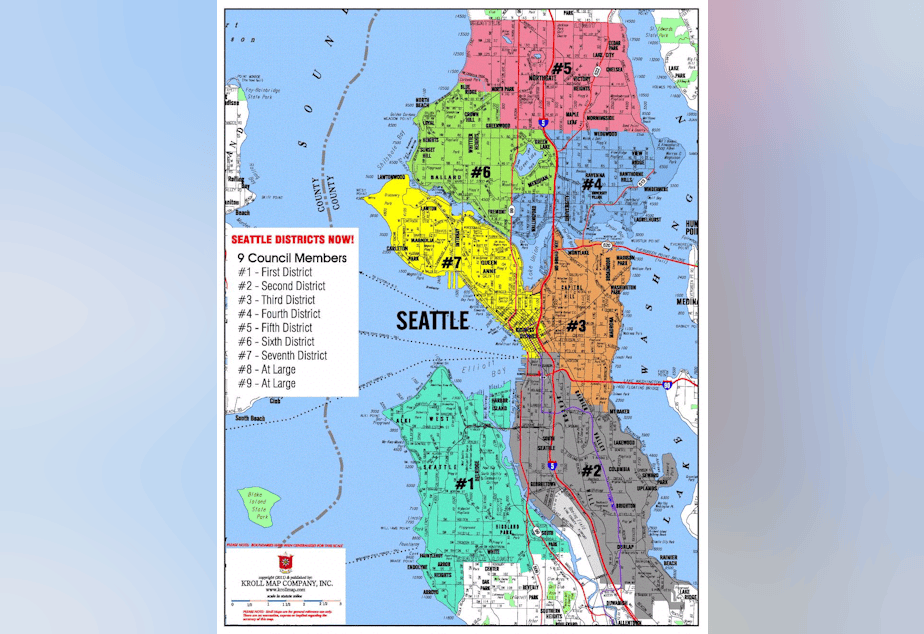New Seattle Districts Could Hurt Poor, Minorities, Critics Say

Seattle voters may have just voted for several city council races, but they’ll do it again in 2015.
That’s because Charter Amendment 19 calls for the city to be divided into seven districts, with one city council representative from each. But some advocacy groups worry the new system of districts may harm minorities and the poor.
Currently all nine Seattle City Council members are elected citywide. The ballot measure creating the new city council districts was intended to make council members more accountable by having them represent specific neighborhoods. But Toby Guevin with One America Votes said the new districts may be bad for some poor and minority voters because of how the districts are drawn.
“Generally speaking there’s two tactics that are of concern, there’s packing and there’s cracking,” Guevin said. "'Cracking’ is where you separate groups strategically to minimize their influence. And ‘packing’ is where you pack them into one district so that they have influence over one district but you minimize their impact in other districts.”
Guevin said the new map “packs” minority voters in Southeast Seattle, but “cracks” apart minority blocks in the Capitol Hill and West Seattle districts. He said those poor and minority voters will be part of wealthier districts that may not focus as much on affordable housing and other key issues.
Sponsored
“What we’re really concerned about is accountability breaking down for those communities where they’re really not able to hold elected officials accountable for their positions on different issues,” he said. But Guevin said he doesn’t know of any pending legal challenges to the ballot measure – instead his group and others will try to educate voters and make the best of it.
The district map was created for the backers of the ballot initiative by Richard Morrill, professor emeritus of geography at the University of Washington. He said federal rules prohibit diluting minority voting blocs, and Seattle doesn’t have the minority population to create two strong minority districts. So he created one in South Seattle. The districts will be redrawn by an independent commission after the next census, in 2020.
Seattle city council member Mike O’Brien said the council districts could have used cultural boundaries rather than geographic boundaries to better preserve minority voting blocs. Still, he hopes the smaller districts will help newcomers enter the political process.
“I get to run again in two years, that wasn’t what I was planning a month ago but I’m going to make the most of that,” O’Brien said. “I think it’ll be interesting to see how people think differently or maybe different people are elected to fill the seats.” He said it’s appears the council will see new faces in 2015, as no current members live in the newly created North Seattle district.
O’Brien said he doesn't want to move from his Fremont home. “I’m just finishing up an 18-year remodel, and I would have to do that without the rest of my family, I think,” he said.
Sponsored
O’Brien and fellow councilmember Nick Licata now live in the same district. O’Brien said they haven’t had a chance to talk about that. Tim Burgess and Sally Bagshaw are in the same situation, as are Bruce Harrell and Sally Clark. O’Brien predicts that current councilmembers will be interested in running for one of the two at-large seats under the new system, even possibly running against each other.

